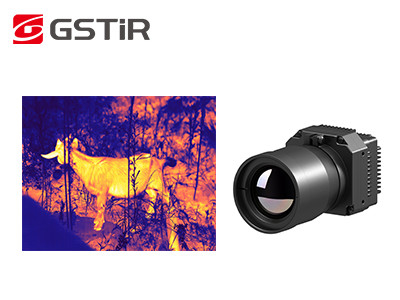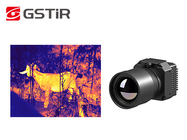-
Thermal Camera Core
-
Thermal Security Camera
-
Drone Thermal Camera
-
EO IR Systems
-
Thermal Imaging Binoculars
-
Infrared Thermal Camera Module
-
High Resolution Thermal Camera Module
-
Cooled Infrared Detectors
-
Optical Gas Imaging
-
Thermal Camera For Fever Detection
-
Cooled Camera Modules
-
Vehicle Mounted Thermal Camera
-
Integrated Dewar Cooler Assembly
-
Uncooled Infrared Detectors
High Resolution VOx Infrared Thermal Camera Module LWIR 8~14μm Spectral Range

Contact me for free samples and coupons.
Whatsapp:0086 18588475571
Wechat: 0086 18588475571
Skype: sales10@aixton.com
If you have any concern, we provide 24-hour online help.
x| Resolution | 1280x1024/12μm | NETD | <50mK |
|---|---|---|---|
| Spectral Range | 8~14μm | Size | 20x20x10.4mm |
| Highlight | High Resolution LWIR Camera Module,14um Thermal Camera Module,VOx Thermal Imaging Camera Core |
||
VOx High Resolution Thermal Camera Module Uncooled LWIR 1280x1024 / 12μM
PLUG1212R is one of the PLUG-R series uncooled infrared camera module developed by Global Sensor Technology (GST). It adopts the market preferred focal plane array VOx microbolometer uncooled infrared detector, professional signal processing circuit and image processing platform, completely transforms the target infrared radiation into temperature data. Its temperature measurement is available and temperature range can be customizable raging from -20℃~150 ℃ for industrial temperature measurement.
With large array 1280x1024 resolution, the PLUG1212R uncooled thermal module could present more image details and supports larger field of view. The reduced 12µm pixel size offer better spatial resolution and match shorter optical lens focus to achieve the same range mission.
- Pixel pitch: 12μm
- Resolution: 1280x1024
- Spectra Range: 8μm -14μm
- High Sensitivity: NETD<30mK
- Temperature Range: -20℃~150℃, 100℃~550℃
- Temperature Accuracy: ±2℃ or ±2%
- High reliability & Strong Environmental Adaptability.
| Model | PLUG1212R |
| IR Detector Performance | |
| Resolution | 1280x1024 |
| Pixel Pitch | 12μm |
| Spectral Range | 8~14μm |
| NETD | <30mk |
| Image Processing | |
| Frame Rate | 25Hz |
| Start-up Time | <25s |
| Analog Video | / |
| Digital Video | HDMI/RAW/YUV/BT1120 |
| Extension Component | USB/Camerlink |
| Dimming Mode | Linear/Histogram/Mixed |
| Digital Zoom | 1~8X Continual Zoom, Step Size 1/8 |
| Image Display | Black Hot/White Hot/Pseudo Color |
| Image Direction | Horizontally/Vertically/Diagonally Flip |
| Image Algorithm | NUC/AGC/IDE |
| Electrical Specification | |
| Standard External Interface | 50pin_HRS Interface |
| Communication Mode | RS232-TTL, 115200bps |
| Supply Voltage | 5±0.5V |
| Temperature Measurement | |
| Operating Temperature Range | -10°C~50°C |
| Temperature Range | -20°C~150°C, 100°C~550°C |
| Temperature Accuracy | ±2°C or ±2% (Take the Maximum Value) |
| SDK | ARM/Windows/Linux SDK, Full Screen Thermography |
| Physical Characteristics | |
| Dimension (mm) | 56x56x40.2 |
| Weight | ≤200g |
| Environmental Adaptation | |
| Operation Temperature | -40°C ~ +70°C |
| Storage Temperature | -45°C ~ +85°C |
| Humidity | 5%~95%, Non-condensing |
| Vibration | Random Vibration 5.35grms, 3 Axis |
| Shock | Half-sine Wave, 40g/11ms, 3 Axis 6 Direction |
| Optics | |
| Optional Lens | Fixed Focus Athermal: 19mm/25mm |
The PLU1212R infrared imaging module is widely used in Power Electricity, Machine Vision, Building Inspection, Metallurgical Petrochemical etc.
![]()
![]()
1. What is infrared thermal imaging?
Infrared thermal imaging is a method of using infrared radiation and thermal energy to gather information about objects, in order to formulate images of them, or get temperature information of the objects, even in low visibility environments.
2. How does Infrared Thermal Imaging Work?
Infrared thermal imaging system is a passive non-contact detection and identification of infrared technology. It focuses the infrared radiation of the scene on the focal plane array infrared detector through the infrared optical system that can pass through infrared radiation. The thermal detector converts the radiation signal of different intensity into the corresponding electrical signal, and then through amplification and video processing, forms the infrared image that can be observed by the naked eyes.




